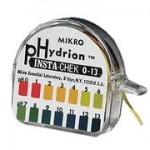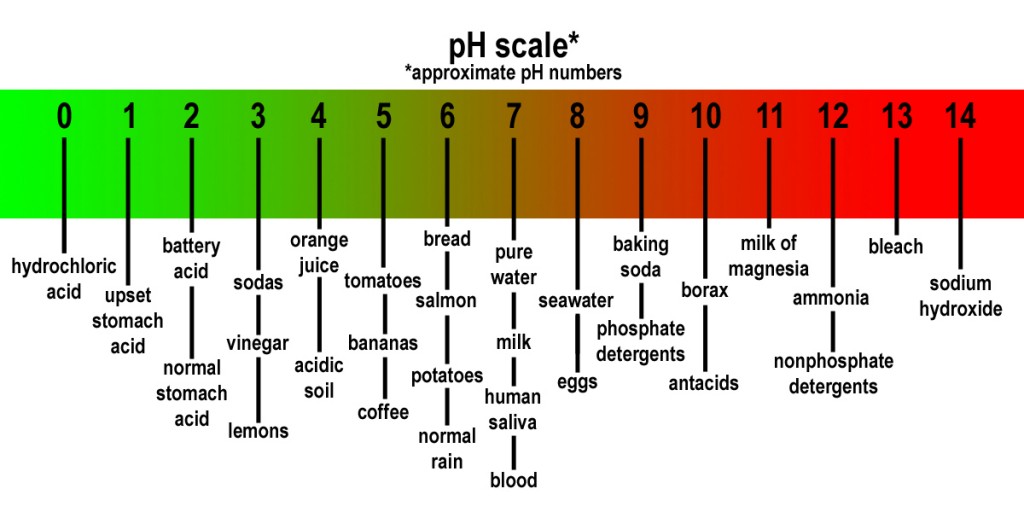Are blood tests, yearly medical exams and physicals really the best health monitors?
What is pH?
PH is the abbreviation for potential hydrogen. The pH of any solution is the measure of its hydrogen-ion concentration. The higher the concentration (pH reading), the more alkaline and oxygen rich the fluid is. The lower the concentration of hydrogen ions, the more acidic and oxygen deprived the fluid is. Complete healing of chronic illness can only take place when tissue is restored to a slightly alkaline pH. Tissue pH is reflected externally through urine and saliva. The pH range is from 0 to 14, with 7.0 being neutral. Anything above 7.0 is alkaline, anything below 7.0 is acidic.
Importance of pH
Scientists have discovered that the body fluids of healthy people are alkaline (high pH) whereas the body fluids of sick people are acidic (low pH). If you have a symptom, disease or health concern on any level, you are probably over acid. If the cause of the pH level (acidity) is not identified and corrected, the health condition will continue to escalate until it reaches a chronic level. If cells are maintained in a severely acid environment, it causes organ failure and eventually death.
No matter what type of modality you choose to take care of your health problem, it will not be effective long term if it does not change the pH level to a slightly alkaline level. An acidic balance will decrease the body’s ability to absorb vitamins, minerals and other nutrients, decrease the energy production in the cells, decrease the body’s ability to repair damaged cells, decrease it’s ability to detoxify and increase tumor cell production. You can pay a lot of money for a good alternative health panel of blood, urine, saliva and hair analysis. Or you can be your own doctor and get a very good idea of whether your body is moving toward health or disease with pH testing.
How to test pH
 Testing the pH of the urine or the saliva is done in the same way. You can purchase a roll of pH paper, also known as litmus paper (found at most health food stores). You can also purchase pH stix, which are easier to use and read. To test pH, you will need a pH stix, or about an inch of pH paper from your roll.
Testing the pH of the urine or the saliva is done in the same way. You can purchase a roll of pH paper, also known as litmus paper (found at most health food stores). You can also purchase pH stix, which are easier to use and read. To test pH, you will need a pH stix, or about an inch of pH paper from your roll.
To test saliva, pool a little saliva on or under your tongue and dip half of your pH paper (or stix) in it. Wet thoroughly and compare the color immediately with the color chart that came with your stix or pH paper.
To test urine, capture some urine in a clean container. A paper cup generally works well. Dip your pH stix or half of the piece you tore from the pH roll into the urine and compare immediately with the color chart.
Salivary pH = healing/regeneration potential
Salivary pH is most useful for monitoring how well the body is breaking down the foods being eaten. If the intestines are not able to digest and absorb food, it will not extract nutrition from the food. If your intestines cannot process nutrition, it doesn’t matter how good you eat or how many supplements you take. You are unable to rebuild healthy tissue. To test the overall health of the intestine, test the saliva first thing in the morning — before using the bathroom, brushing teeth, drinking water, smoking or even thinking about food. Optimal salivary pH is 6.4 – 6.8 first thing in the morning. If your morning pH is not in range, begin testing your salivary pH two hours after each meal. This will give you an idea of how acid or alkaline your last meal was…but it takes a couple of hours in your digestive system to give an accurate reading. Use this information to assist you in finding foods and diets that are healthy (alkaline). Optimal pH for saliva immediately after eating can be as high as 8.5, but should drop down to 7.0 – 7.2 two hours after the meal. That is a good range. If your numbers are below that range, consider that something you ate is breaking down into excessive acid.
Urine pH = ability to remove waste; detoxification potential
Urine can provide a fairly accurate picture of body chemistry. If the body is able to keep a healthy balance of chemistry, all building, detoxification and regeneration functions will be in order allowing the body to do its job in an efficient manner. The most effective urine is the second morning’s urine as the first contains a concentration of acids because it sat in the bladder for an extended period of time. Ideal range of second morning urine is 5.8 to 6.8.
Keeping pH in a healthy range
If you begin to study pH, you find that most people speak in terms of mineral reserves. If the pH numbers are not in range, some form of supplement is recommended, generally calcium or magnesium. Before you invest money into supplements that may not correct the cause, consider this:
There is a general guideline of what foods produce alkalinity and what foods produce acidity. Click here for a list of Alkaline foods.
If you have a moderately healthy diet and the intestines are kept in working order (digestion and elimination), the body will easily extract the ions needed to keep all mineral levels in balance. Even if you don’t have a diet rich in calcium, per se, the body uses something called transmutation to convert other elements in the body into calcium if that is what the body needs. The key is a healthy digestive/intestinal system. This is one of the main reasons that our Nutritional Supplement section is focused on health of the intestine rather than a ‘complete supplement line.”
In addition to alkaline food intake and intestinal health, dehydration is an important factor in keeping pH balanced. Make sure you are drinking plenty of clean, fresh water each day. And no, alkaline water is not the best source of water. Save your money and put it into good, organic produce.
Warning signs of acidity
One of the common signs of over acidity is receding gums and gingivitis. These signs evidence that the body is losing bone mass. Yes, the mouth reflects the health of the bones. The body will “borrow” calcium from the bones to buffer acids from the diet and to fight hidden infections. When enough bone mass has been lost in the jaw the gums will recede and the teeth become loose. It is at this point that bacteria can get under the gums causing what’s known as gingivitis. Unfortunately dentists do not understand this downward progression and are unable to offer their patients real answers. But now you know better, do something about it!
So, get some pH paper and every few months, check your urine and salive ph first thing in the morning for 5 days in a row. If you find your numbers are in range, you can feel fairly sure that your health is safe. If the numbers are lower than they should be, take steps to get them back to where you want them. It is quite simple to be your own doctor, but we are here with professional assistence if you desire it.

